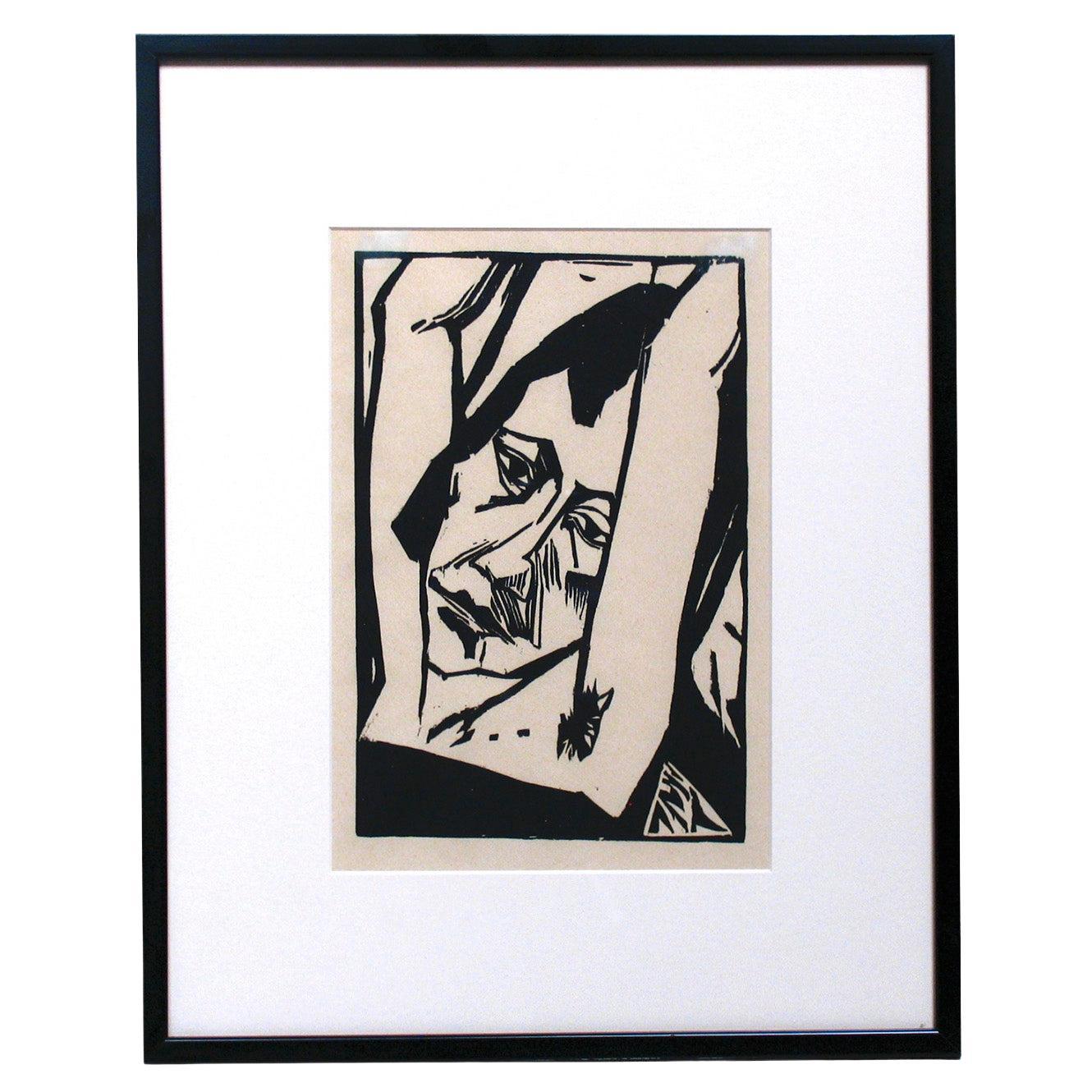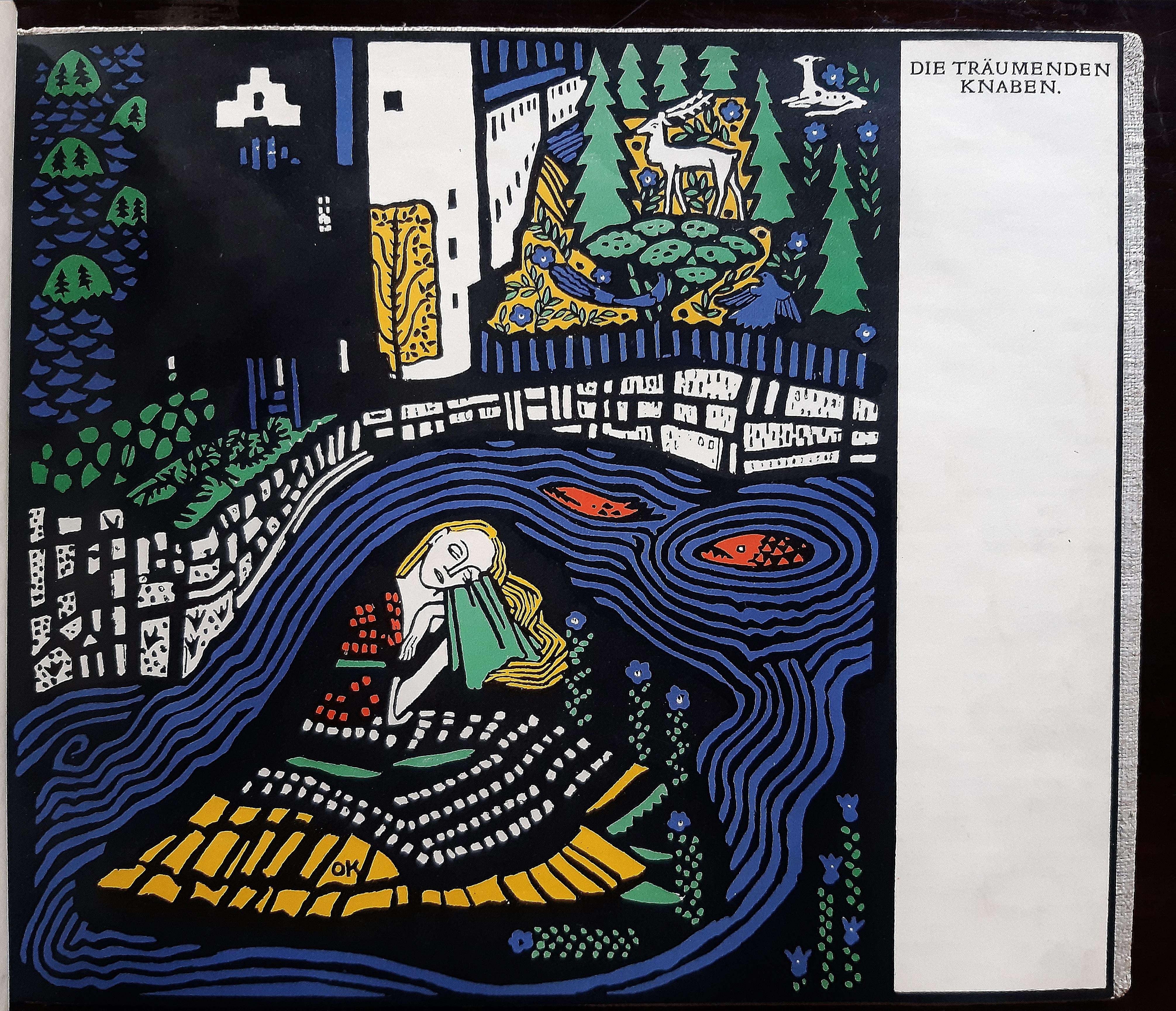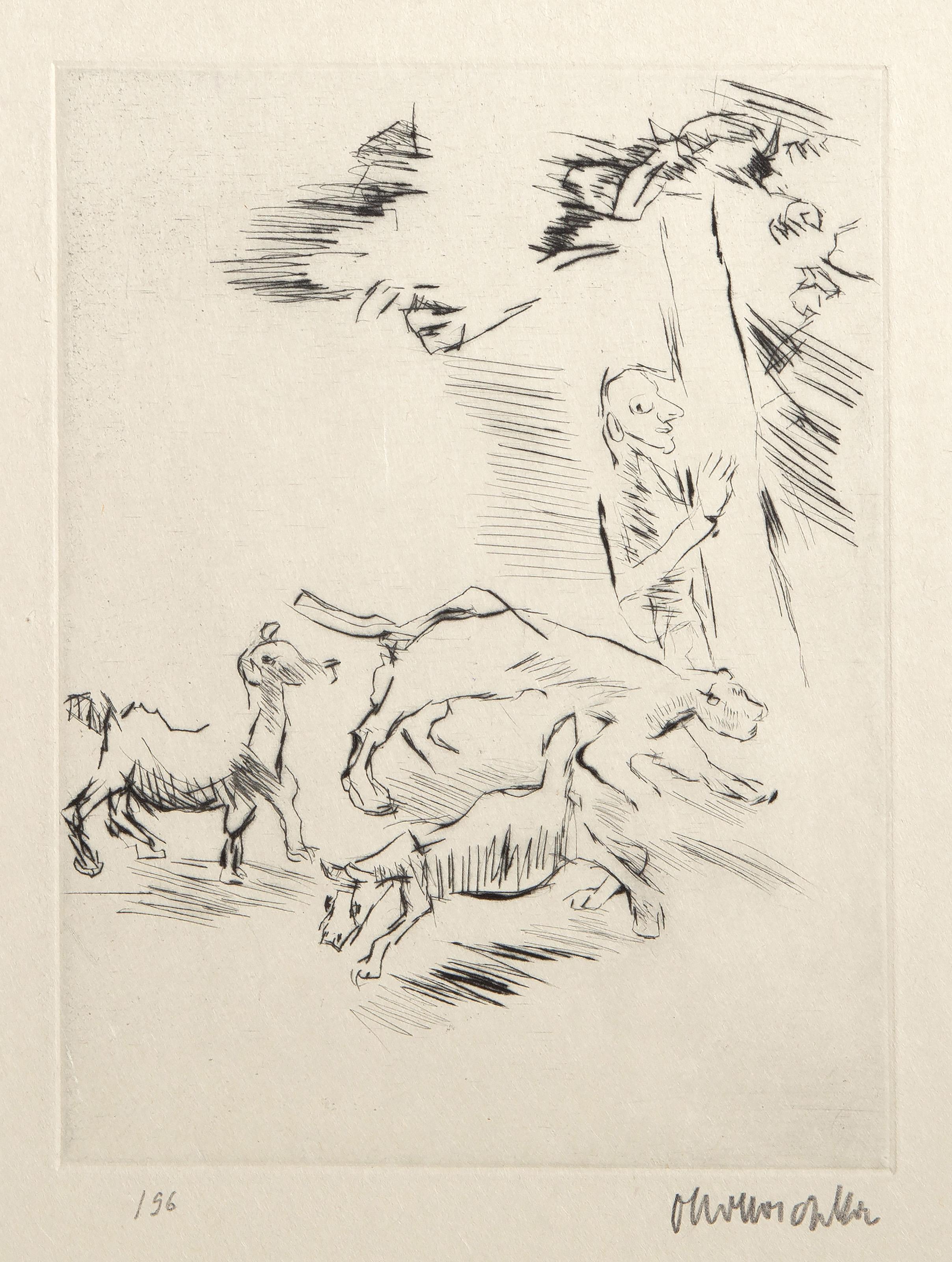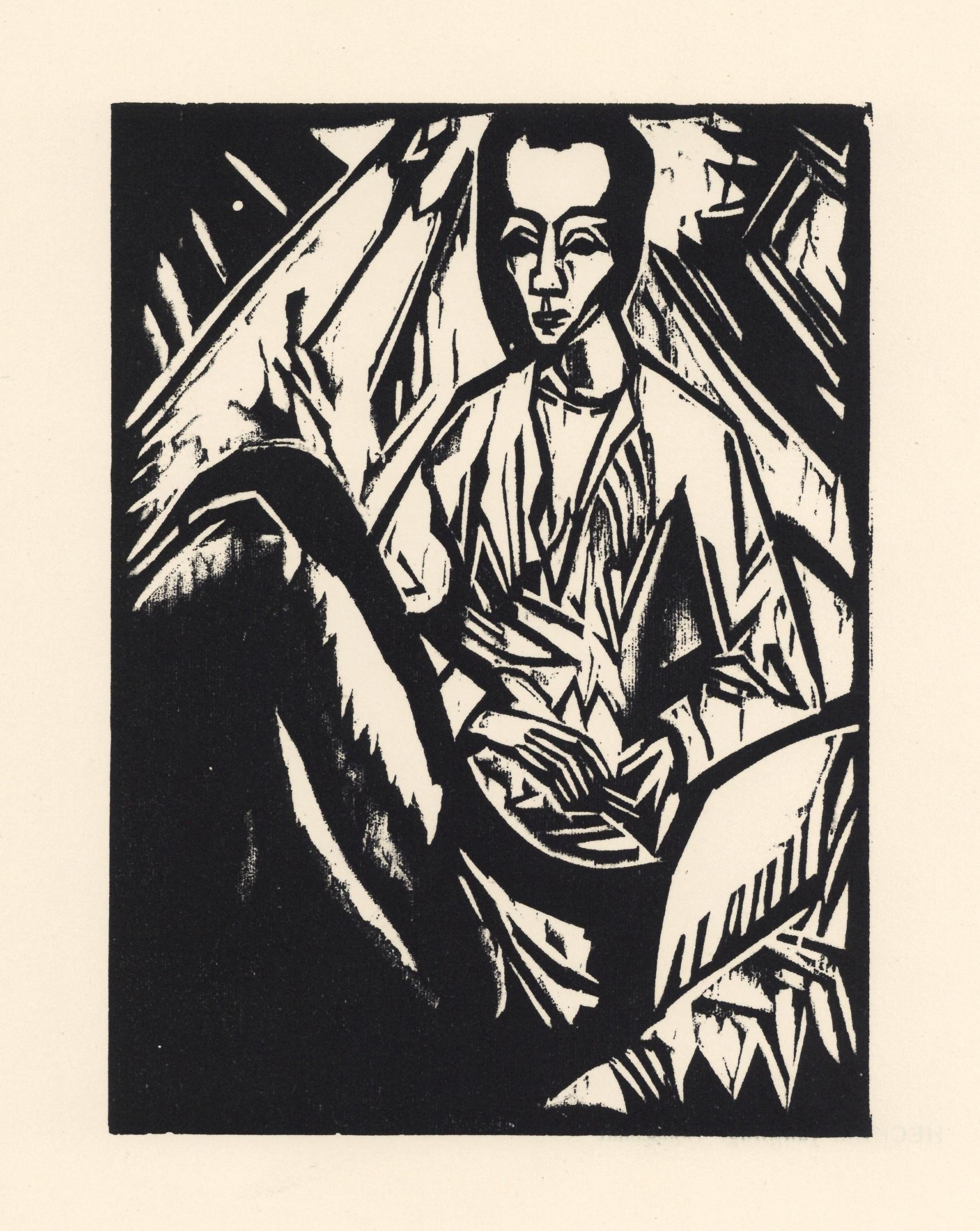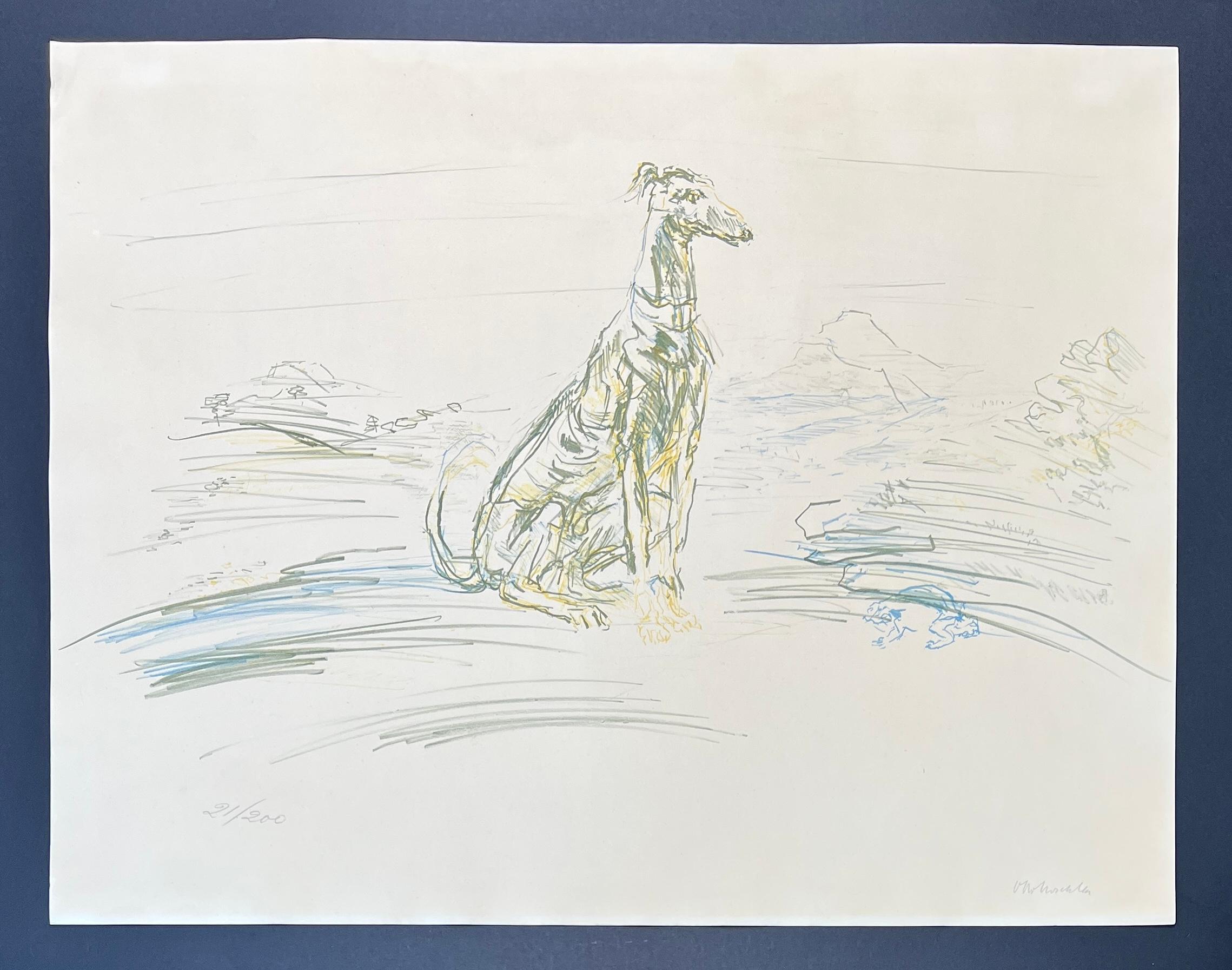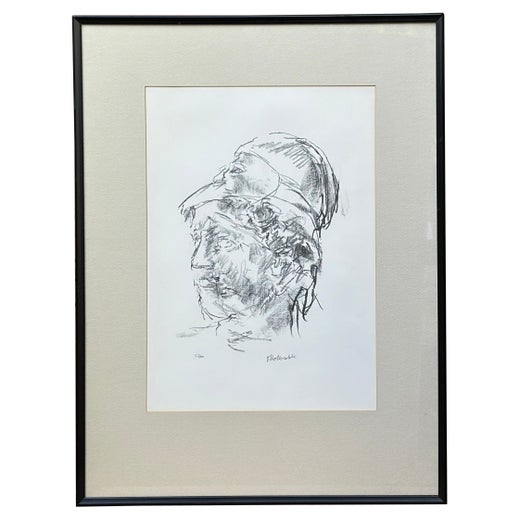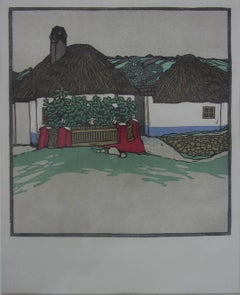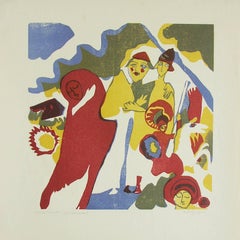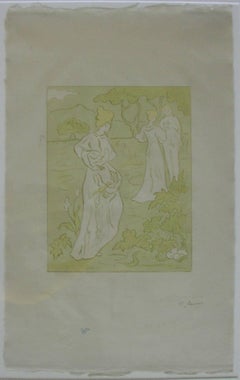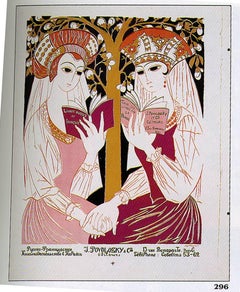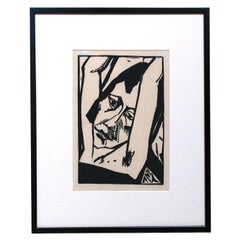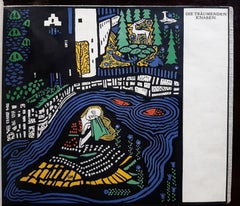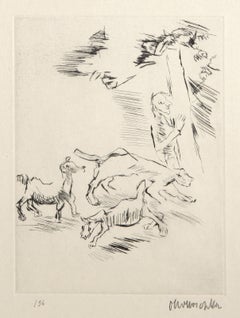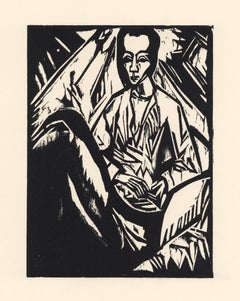Items Similar to Mädchen am Fenster. 1906-08.
Want more images or videos?
Request additional images or videos from the seller
1 of 2
Oskar KokoschkaMädchen am Fenster. 1906-08.1906-1908
1906-1908
$6,500
£5,060.69
€5,755.46
CA$9,351.95
A$10,272.70
CHF 5,368.58
MX$122,510.47
NOK 67,980.71
SEK 63,329.76
DKK 43,007.48
About the Item
Mädchen am Fenster. 1906-08. Color lithograph printed on smooth card stock. Full margins. , signed by the artist in pencil, on the recto. Published by the Wiener Werkstätte, Vienna, with the printed postcard text on verso. Among Kokoschka's earliest prints were a series of 14 postcards, the current work and the following lot that he produced for the Wiener Werkstätte. Wingler/Welz 4.
Oskar Kokoschka was an Austrian artist, poet and playwright best known for his intense expressionistic portraits and landscapes.
- Creator:Oskar Kokoschka (1880 - 1980, Austrian)
- Creation Year:1906-1908
- Dimensions:Height: 3.75 in (9.53 cm)Width: 3 in (7.62 cm)
- Medium:
- Movement & Style:
- Period:
- Condition:
- Gallery Location:New York, NY
- Reference Number:1stDibs: LU29221435613
Oskar Kokoschka
Oskar Kokoschka (1 March 1886 – 22 February 1980) was an Austrian artist, poet and playwright best known for his intense expressionistic portraits and landscapes. He was second child to Gustav Josef Kokoschka, a Czech goldsmith, and Maria Romana Kokoschka (née Loidl). His older brother died in infancy in 1887; he had a sister, Berta (born in 1889) and a brother, Bohuslav (born in 1892). Oskar had a strong belief in omens, spurred by a story of a fire breaking out in Pöchlarn shortly after his mother gave birth to him. Kokoschka’s life was not easy mainly due to a lack of financial help from his father. They constantly moved into smaller flats, farther and farther from the thriving center of the town. Concluding that his father was inadequate, Kokoschka drew closer to his mother. Among Kokoschka’s early works were gesture drawings of children, which portrayed them as awkward and corpse-like. Kokoschka had no formal training in painting and so approached the medium without regard to the “traditional” or “correct” way to paint. The teachers at Kunstgewerbeschule helped Kokoschka gain opportunities through the Wiener Werkstätte or Viennese Workshops. Kokoschka’s first commissions were postcards and drawings for children. Kokoschka said that it gave him “the basis of [his] artistic training”.[1] His early career was marked by portraits of Viennese celebrities, painted in a nervously animated style. He volunteered for service as a cavalryman in the Austrian army in World War I, and in 1915 was seriously wounded. At the hospital, the doctors decided that he was mentally unstable. Nevertheless, he continued to develop his career as an artist, traveling across Europe and painting the landscape.
About the Seller
5.0
Vetted Professional Seller
Every seller passes strict standards for authenticity and reliability
1stDibs seller since 2015
62 sales on 1stDibs
Associations
International Fine Print Dealers Association
- ShippingRetrieving quote...Shipping from: New York, NY
- Return Policy
More From This Seller
View AllSlowakisches Bauernhaus,
By Karl Schwetz
Located in New York, NY
Schweiz, Karl. Slowakisches Bauernhaus, Ca 1911. Color linoleum cut.
Framed.
Provenance: Galerie Michael Pabst, Munich.
Noted artist, painter, illustr...
Category
1910s Vienna Secession Landscape Prints
Materials
Linocut
Allerheiligen- All Saints Day.
By Wassily Kandinsky
Located in New York, NY
KANDINSKY, Wassily. Allerheiligen- All Saints Day. Original three-color woodcut (red, yellow ochre, blue – with olive green). 1911. Signed with the monogram...
Category
1910s Blue Rider Abstract Prints
Materials
Woodcut
Tristesse ou Jalousie.
By Paul Elie Ranson
Located in New York, NY
Tristesse ou Jalousie. 1896. Color lithograph. One of 50 on laid Japan paper from the deluxe edition of "Le Centaure;, blind stamp lower left. Signed in ink and annotated W; in blue ...
Category
1890s Art Nouveau Figurative Prints
Materials
Lithograph
Price Upon Request
Livre Russe et Francais, J. Povolozky& Cie
By Natalia Goncharova
Located in New York, NY
Livre Russe et Francais, J.Povolozky/Editeur & Cie, Ca 1922. Color lithograph, signed in the stone. Rare Vintage Poster.
As a painter, Natalia Gontcharova was, together with her ...
Category
1920s Constructivist Figurative Prints
Materials
Lithograph
Der Polster
By Max Kurzweil
Located in New York, NY
Kurzweil, Maximilian. Der Polster, 1903. Color woodcut on japon. Included as an insert in Pan. Unsigned. Framed.11 1/4 x 10 1/4. 1
Ref: Hofstatter, p. 241; Pabst, p. 154.
Maximillian Kurzweil was the co-founder of the Vienna Secession in 1897 and editor and illustrator of the influential Secessionist magazine Ver Sacrum...
Category
Early 1900s Vienna Secession Figurative Prints
Materials
Lithograph
From Miroir du Poète Album
By André Masson
Located in New York, NY
Color aquatint on black backround from Miroir du Poete, published by Louis Broder, Paris, 1960. II/VI of 6 on japon of a total edition of 66. Signed and numbered in pencil by the art...
Category
1960s Surrealist Abstract Prints
Materials
Aquatint
You May Also Like
Junges Mädchen / Young Woman by Erich Heckel (German, 1883-1970), Woodcut Print
By Erich Heckel
Located in Point Richmond, CA
Erich Heckel (German, 1883 - 1970) Woodcut Print. Title: Junges mädchen / Young Woman (Dube 264 IIIB, Davis-Riffkind 1038, Brücke 14). Original woodcut carved & printed in 1913, woo...
Category
Vintage 1910s German Expressionist Prints
Materials
Paper
Die Traumende Knaben - Lithographs by Oskar Kokoschka - 1908
By Oskar Kokoschka
Located in Roma, IT
Die Traumende Knaben is an original modern rare book illustrated by Oskar Kokoschka (Pöchlarn, 1886 – Montreux, 1980) in 1908 .
Original First Edition.
Published by Wiener Werkstä...
Category
Early 1900s Expressionist More Art
Materials
Lithograph
Der Beobachter, Modern Etching by Oskar Kokoschka
By Oskar Kokoschka
Located in Long Island City, NY
Oskar Kokoschka, Austrian (1886 - 1980) - Der Beobachter, Year: circa 1959, Medium: Etching on natural laid paper, signed and numbered in pencil, Edition: 96, Image Size: 9.25 x 7 ...
Category
1950s Modern Animal Prints
Materials
Etching
"Krankes Mädchen" original woodcut
By Erich Heckel
Located in Henderson, NV
Medium: original woodcut. Printed in 1920 for the Deutsche Graphiker der Gegenwart portfolio, and published in Leipzig by Klinkhardt & Biermann in an edition of 500. Catalogue refere...
Category
1920s Expressionist Figurative Prints
Materials
Woodcut
"Le Bal Masque" Giuseppe Verdi Opera
By Oskar Kokoschka
Located in San Francisco, CA
This artwork titled "Le Bal Masque" Giuseppe Verdi Opera, 1967 is an original color lithograph on Japan paper by renown Austrian expressionist artist Oskar ...
Category
Mid-20th Century Expressionist Figurative Prints
Materials
Lithograph
Oskar Kokoschka (1886-1980) - Coloured chalk lithograph on porous paper
By Oskar Kokoschka
Located in Varese, IT
Coloured chalk lithograph on porous paper and vélin, edited in 1952.
Limited edition of 200 copies , numbered as 21/200 in lower left corner.
Hand-signed in pencil by artist in lowe...
Category
1950s Expressionist Prints and Multiples
Materials
Paper, Lithograph
More Ways To Browse
Pierre Yves Riveau
Piranesi Architectural Etchings
Piranesi Views Of Rome
Prayer At Valley Forge
Richard Yarde
Robert Elliot
Robert Gibbings
Romare Bearden Poster
Ronald King
Roy Lichtenstein Reflections
Rufino Tamayo Signed
Russian Woodcut
Saint Genie
Salvador Dali Green
Salvador Dali Signed Prints Bullfight
Secession Poster Vienna
Shepard Fairey Large
Signed Charles Bragg
